Published: 5 December 2024
Last updated: 5 December 2024
In a time when Jews around the world are feeling very unloved, the Italian city of Lecce provides a paradoxical source of comfort.
On one hand, there are no Jews left. Zero. They were driven out in the 15th century and did not return. Yet their presence in this beautiful centre of southern Puglia remains alive and visible thanks to a fascinating Jewish museum that was founded and is run by non-Jews from the city.
The Jewish Medieval Museum of Lecce is the passion project of a local tourist agency owner, Michelangelo Mazzotta, who bought a house in the Via della Sinagoga in 2009. The name of the street intrigued Mazzotta, prompting him to start researching the history of the precinct. After discovering that his new house was located in the old Giudecca (Medieval Jewish district), Mazzotta decided to deepen his involvement with the city’s Jewish past.
Together with his daughter, and a pair of friends, Mazzotta rented part of a building in the old Giudecca and converted its underground area into a museum to preserve and showcase the forgotten Jewish history of medieval Lecce to the hordes of tourists who now flock to Puglia every summer to enjoy its stunning beaches, food and fashion.
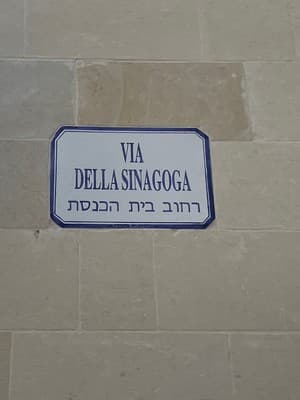
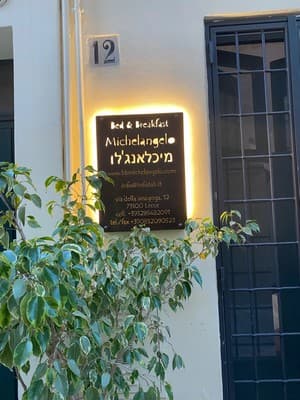
Mazzotta brought in a professor of Hebrew language from a local university to create a permanent exhibition for the new museum, which opened in 2016, adding a new cultural dimension to the city known as the “Florence of the South” because of its beautiful churches and architecture.
One of Lecce’s chief attractions is the Basilica di Santa Croce, a breathtaking example of baroque architecture that draws gasps from tourists through the rich decorations packed onto its brilliant white stone façade. When the afternoon sun bathes the facade in a warm yellow light, it is spellbinding.
Few of them would realise, however, that the church was built on the site of what once was the Giudecca synagogue, a deliberate decision by Lecce’s Catholic 16th-century leaders to obliterate any vestige of the Jewish community’s presence in the city.
The museum sits adjacent to the cathedral, attracting up to 200 tourists each day during summer, our guide told us, for a tour that combines virtual reality exhibits with an exploration of the old Jewish precinct, delivering a familiar tale of prosperity and victimisation, warts and all.
Lecce had one of the most prominent Jewish settlements in the Kingdom of Naples before the expulsion of the Jews. Their occupations were mostly textile dyeing (silk and wool), cattle-raising and moneylending, as they were not allowed to own real estate or engage in occupations closer to the court.
The first documented proof of a Jewish community in the city dates back to the 14th century, and their number increased between 1384 and 1446 under the protection of Lecce’s ruling countess, Maria d’Enghien. But around 1440 the countess hardened her attitude towards the Jews, in line with the Pope’s Fourth Council of the Lateran.
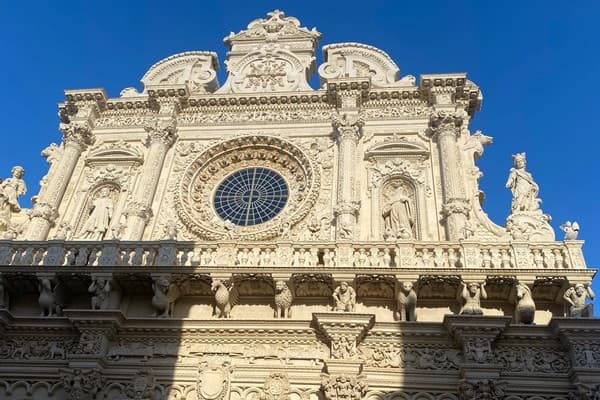
One of the results of this change was that in 1445 the Jews of Lecce were forced to wear a small red cloth badge, in the shape of an “O”, to distinguish them from other citizens. The “badge” can be seen on several 15-century Salentine (local Salerno) paintings. In today’s parlance, it was an early form of what we now call doxing.
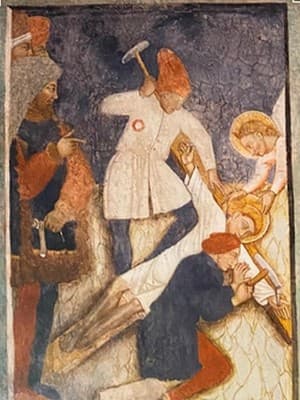
However, the Jews still enjoyed protection under the law and appeared to have avoided persecution until the last Count of Lecce, Giannantonio del Balzo-Orsini, died in 1463. With his death, the city came under the direct rule of Ferdinand the 1st, King of Aragon, there was an outbreak of violence against the Jews. During this time the ghetto was sacked, a number of Jews were killed, and the remainder driven away.
All of this is explained in the museum, which explores the everyday life of the Jewish community in Puglia between the ninth and fifteenth centuries. Some elements were excavated from the ghetto - such as a mezuzah or scriptures in Latin or Hebrew. The museum also contains the remnants of a mikveh, which was discovered under the building.
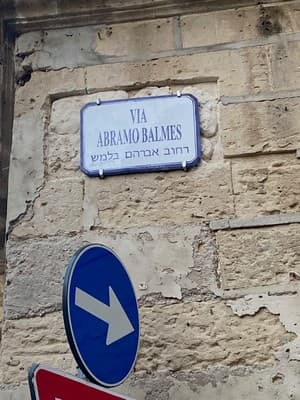
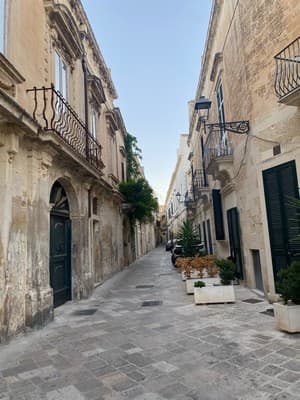
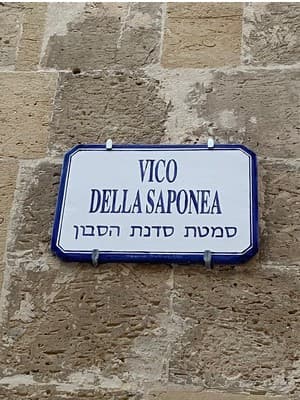
In In the city itself, the only obvious signs of the community’s existence from medieval times are the names of nearby streets. Via della Sinagoga, Via Abramo Balmes (in homage to the Jewish physician born in Lecce) and Vico della Saponea (soap makers, the principal activity of Jews in Lecce).
Lecce did have some more recent Jewish residents, albeit briefly, during World War 2, when a Displaced Persons camp was set up in the city. Some who later migrated to Israel returned to the city and their stories, together with clips from a documentary about them, provide a moving reminder of another chapter in Lecce’s Jewish history.
All of this history would have remained buried under the church had it not been for Michaelangelo Mazzotta, who looks for any opportunity to remind visitors of the city’s Jewish roots. In addition to the museum, he runs a bed and breakfast in the Via Sinagogia, and the sign carries his name in Roman and Hebrew lettering.
There may be no Jews left in Lecce but it is comforting to know someone in the city is looking out for them.
All photos by Michael Visontay




Comments1
Fred Morgan5 December at 10:57 pm
Fascinating ethnographic article, Michael. It’s quite uplifting. I’m leading a “Shalom Mediterranean Isles” tour next year which includes Sicily and also Puglia. We’ll be sure to visit this museum!